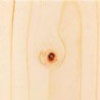White Deal

| Wood type | Softwood |
| Environmental | Not listed in CITES. Believed available from well-managed sources. Check certification status with suppliers. |
| Introduction | Shipments of European whitewood are made up of both silver fir (Abies alba) and Norway spruce (Picea abies). The relevant information for both trees is included in this entry, including the mechanical properties. The structural species mix ‘British spruce’ comprises Norway spruce (Picea abies) and Sitka spruce (Picea sitchensis), grown in the UK and Ireland. The mechanical properties quoted for the UK are for this species mix. |
| Distribution | SILVER FIR Its natural habitat is in the mountain regions of Central and Southern Europe. It occurs in northern Spain, Corsica, and in the Balkans across Bulgaria to the Black Sea. In the east, it is found from Poznan in Poland, and south through Warsaw to the Carparthians. The tree was introduced into England in 1603. SPRUCE, NORWAY Widely distributed throughout Europe with the exception of Denmark and the Netherlands. Although classed as an introduced species to the UK there is ample evidence that the spruce was native when the upper beds of the Tertiary formations were laid down. There is no true record of its modern introduction, but it is known to be prior to 1548. |
| The Tree | SILVER FIR It grows to a height of about 37m with a diameter of about 1m but under favourable conditions it is often a larger tree. In open conditions of growth, it retains its lower branches for 40 or 50 years. but after that age they begin to fall off. SPRUCE, NORWAY Its average height is 36m with a diameter of 0.75m or more, but its best development is in the Carpathian mountains where it reaches 60m in height and up to 1.8m in diameter. |
| The Timber | SILVER FIR The timber closely resembles that of Norway spruce (Picea abies) but is slightly less lustrous. It is almost white in colour, with a yellowish-brown cast and faintly marked annual rings. The grain is straight, and the texture fine. The wood weighs 480 kg/m3 when dried. SPRUCE, NORWAY There is no difference by colour between sapwood and heartwood, the colour varying from almost white to pale yellowish-brown. The growth rings as seen on plain-sawn surfaces are less prominent than those of Scots pine (European redwood), and the wood is more lustrous. It has a straight grain and a rather fine texture. The weight of the wood is generally about 470 kg/m3 when dried. but is usually a little lower than this for timber grown in the UK and in parts of south-east Europe, due to the faster growth resulting from the relatively lower elevations and climatic conditions of these areas. |
| Drying | SILVER FIR Dries rapidly and well, with little tendency to warp. There is a distinct tendency for knots to loosen and split. SPRUCE, NORWAY Dries rapidly and well, but with a tendency for knots to split and loosen. |
| Strength | SILVER FIR Its general strength is similar to that of Norway spruce, but it is harder on side grain. SPRUCE, NORWAY Norway spruce in general is similar to Scots pine in all strength categories. That grown in the UK is rather weaker when green, but after drying there is little difference between the two types. |
| Working Qualities | Good – Good |
| Durability | Slightly durable |
| Treatability | Extremely difficult |
| Moisture Movement |
Medium |
| Density (mean, Kg/m³) |
470 |
| Texture | Medium |
| Availability | Regular |
| Use(s) | Exterior joinery, Interior joinery, Flooring, Structural |
| Colour(s) | White/cream (to pale yellowish brown) |
